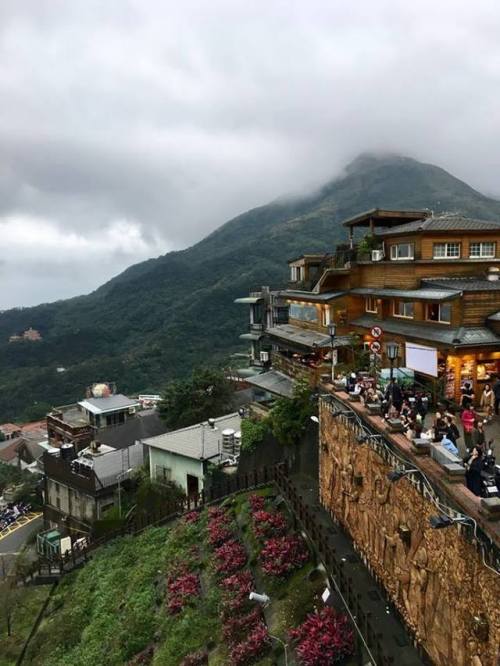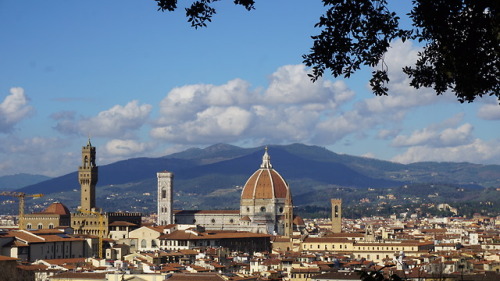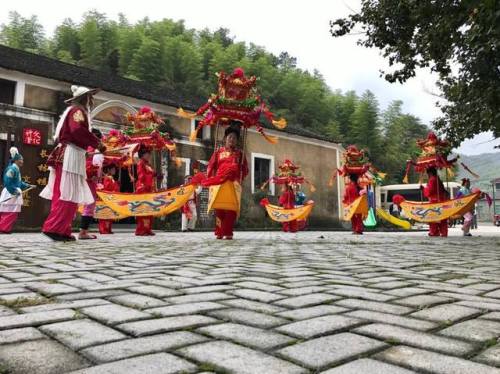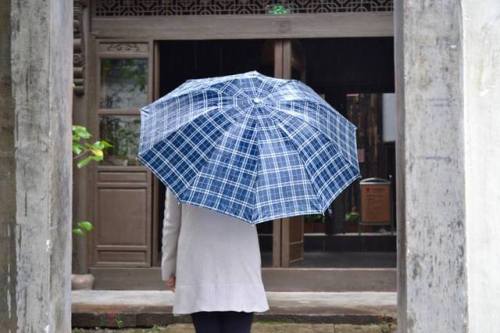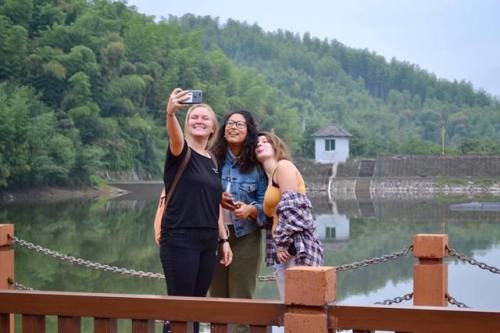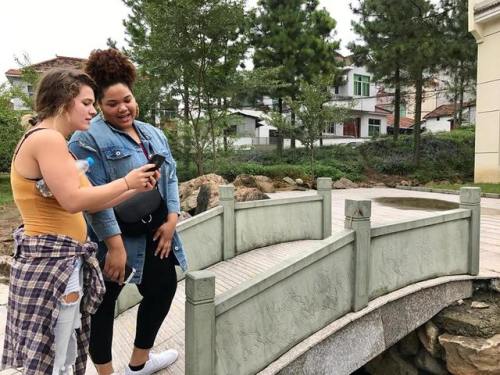#college abroad
IRIS Interview - Kirby Legget
Where are you interning?
Lansky, Ganzger + Partner Attorneys at Law in Vienna, Austria.
Tell us what your internship organization does.
Lansky, Ganzger + Partner is a top international business law firm based in Vienna, Austria in partnership with law firms across the globe. The firm has some of the leading attorneys in Austria as well as experts on topics including human rights and international relations.
What kinds of things do you get to do on a regular basis at your internship?
I get to contribute to research for the business development team at the law firm. Thus far, I have done research for them about small and medium-sized enterprises in sub-Saharan Africa as well as research about the Lira crisis’ effect on foreign mergers and acquisitions in Turkey. The research I contribute to has an impact on the team’s projects so I know that I am making a difference in my workplace.
What are some exciting things you’ve learned at your internship so far?
I have learned the importance of being skilled at researching many parts of the world which LIU Global has trained and prepared me for. I have also learned the importance of human rights advising and advocacy in an international business law firm that I believe leads on those issues.
How is your IRIS internship impacting your thoughts about what you want to do after college?
I am incredibly interested in and working towards studying law and international affairs after graduation to enter the international law and policy field.
Why should future students get excited about their IRIS semester?
IRIS will be a novel experience in your undergraduate education where you will have the freedom to go somewhere and do an internship in a professional field that you are passionate about while researching a topic that fascinates you.
Post link
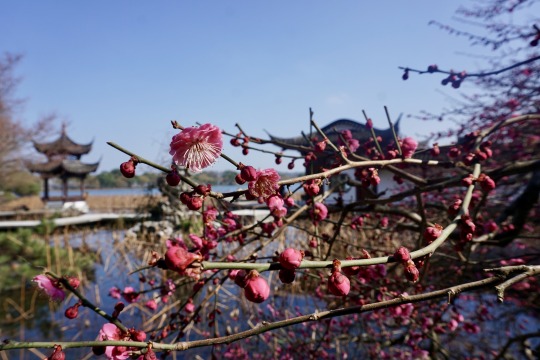
I wake up to the sound of e-bike alarms; it was also my lullaby, and I’m becoming oddly attached to it. Today is Wednesday in Hangzhou, and the students of Zhejiang University Yuquan Campus are ready for it to be Friday. It’s not that we don’t like our classes; this is, after all, one of the top universities in the country, and it shows in the academics and campus. Rather, we are hoping for Friday to reward us for our hard work with more seasonable weather and a possible win at trivia night. As of now, nine in the morning, it is stressfully hot and even more humid.
The food here is delightful, as rather than a sit-down meal of hit-and-miss eggs like I would have in the States, I grab some steamed pork buns, the breakfast of champions and the Chinese. Vitamins are rare in the meat- and bread-based meals here, so I grab a mango-orange juice and pretend it’s healthy. Wednesday morning, for me, means meeting with my counselor to discuss my Junior Research Seminar work, so I sally on up to the balcony and log on to Zoom for my appointment. On the way, I pass people speaking Mandarin, Korean, Arabic, Spanish, English, and what I presume to be Swedish.

China Center students are notorious for not leaving the bubble, but when you take a look at the variety of humanity spilling from the doors of the International Dorm, it’s easy to understand the temptation of just making friends here. As far as many Global students are concerned, China is here, in ZJU’s building 30.
Wednesday afternoons are a doozy for me. The second I wrap up my meeting, I must procure lunch and hustle over to the Center, and upstairs room in a building fifteen minutes from the dorms. This campus is truly enormous, and I have yet to even walk from one end to the other. I pop across the street for some beef and potato curry with rice, da bao (to go, minus the tones) because I don’t have time to relax. This is my favorite part of the day, walking through campus in anticipation of a challenging yet rewarding class, hot lunch in my hand; I build in an extra five minutes so I can walk slowly. ZJU Yuquan campus is lined in trees, green places to relax, mom and pop convenience stores, and rows of yellow bicycles you can borrow for free, if you’re in a hurry. These bikes are all over the city and are outrageously convenient, yet another example of Chinese efficiency, along with paying for everything, and I mean everything, with your phone, and adequate bike lanes. Hangzhou has about ten million residents and hangs, many days, under a layer of smog; when it rains, you are strongly recommended to use an umbrella, lest the chemicals in the rain cause your skin irritation. Still, despite the smog and the humidity, this campus is filled with trees that make the air seem crisp and fresh. By the time I arrive at the Center, I have a pep in my step and a banana I picked up at a fruit stand, ready to start class.
With Global College, I have taken either intensive or survival courses in the following languages: Spanish, German (just key phrases), Darija, Italian, and Bosnian. Nothing prepared me for Mandarin. It’s just the tones, they’re a real game changer. The first tone, like you, could care less, the second tone like you’re mildly surprised, the third tone, as though you are wholly incredulous, and my favorite, fourth tone, like someone just punched you. In theory, it should be easy, but English is a language that relies heavily on intonation for meaning, and I personally have some bad habits. The most egregious is the California Upswing, that pesky habit of ending every sentence on an upward tone like I just asked a question? Most recognizable in Southern California valley girls, I am ashamed to admit that we, too, have it in the North.
Qingqing Laoshi (Sunny Teacher) is unimpressed. Qiaokeli, she says, are you saying can I have some water, or can I have some sleep? Both are shui, and I just can’t wait for class to end so that I can put my notes on flashcards and practice until I no longer feel helpless. We have a grand total of fifteen minutes between the end of class and the start of Junior Research Seminar, so I chow down on my Chinese-style beef curry, filled with cinnamon and perfectly cooked potatoes. I might miss that curry place more than I miss some of my new friends, because food is the best friend I will ever have.
JRS is a breeze as always, with spirited conversations on research ethics and no shortage of connectivity problems. Finding adequate internet in China is always an adventure. As class comes to a close, we disperse, and the day is ours. Some will nap, others will ride bikes to the lake, find a patch of grass, and nap. Let’s be honest, at some point, everybody is going to nap. I save my nap for later, heading to my favorite local café to study and drink a well-deserved milkshake. Later, I will spend an hour calling family so that they know I’m not dead, and perhaps for dinner I will practice my Mandarin on the street noodle vendors. When I feel I have completed as much work as I wanted, I will meander over to a local bar where all of the bartenders are South African and the tiny Chinese girl who fronts the house band is always crooning George Michael hits. I do not go to drink, although I may indulge in a chicken quesadilla; I go to spy on the local fauna. People watching is, without a doubt, my favorite part of living in a large Chinese city, and a consistently uplifting way to end a school day.
If you made it this far, I applaud you. While it may seem that this piece was merely an exercise in ego, let me assure you, I had a point. Through my florid prose and unnecessary asides, I wanted to convey this: China, and the Global College China Center, are different from anywhere I have been to date, but a Wednesday here is still just a school day. Every day of college is made up of a series of seemingly trivial components. It is the individual quality of those components that comprise the spice of life. Each day here is both predictably normal and spectacularly exciting. I can only hope to portray even a sliver of that in my writing.
by Julia McCoy
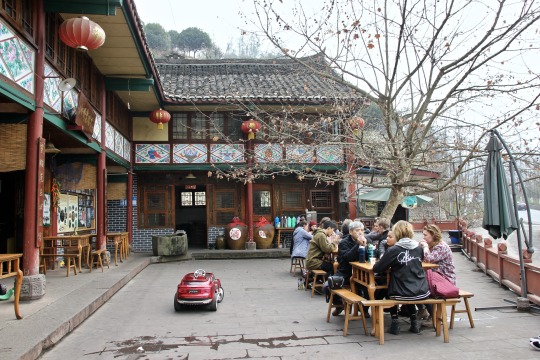
I was sitting in a noodle restaurant in Shanghai, one Saturday before we were set to leave for this legendary trip when I started coughing. It’s no big deal, I reasoned, these peanut butter noodles are spicy and there’s pollen in the air and plenty of smog, so surely the tickle in my throat is only that, nothing sinister. We live in a fair world, so there’s no way I could get a cold right before the amazing trip to the Yunnan and Sichuan provinces I’ve heard so much about.
It was a nasty cold, and I was banished from the trip.
I spend a week and a half alone, healing slowly, drinking buckets of water, and dreaming of the adventures my classmates were having. I was healed when they returned, and I eagerly cornered them and demanded stories. I began with Kate and Emma, shoving my phone in their face as we waited for our noodles.
Kate Yachuk: We talked to Professor Wang, I think, and he told us about the last living hieroglyphic language in the world, which is spoken by thirty people, of which he is one. He was one of the Yi people, he was super friendly and very knowledgeable. And he brought us to his house and gave us lots of candy!
Now, ask any Tom, Dick, or Harry, they’ll tell you how much I love candy, but what I love even more is linguistics. It drives my friends insane, but I’m proud of how truly nerdy I am. One of the main, nerdiest reasons I was so gung-ho for this particular field trip was to personally observe the culture of the Mosuo people, one of the last matriarchal society in the world, with whom I have been fascinated since I was ten years old. The Mosuo live around Lugu Lake, and Emma gave me the briefest of fill-ins on the matter.

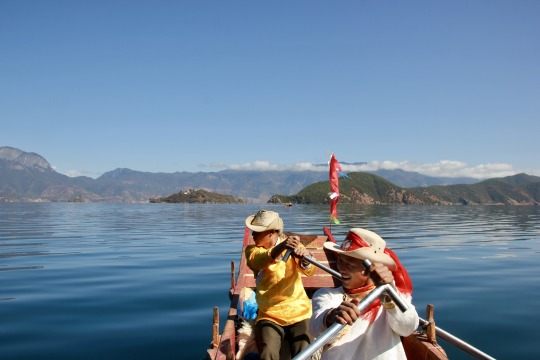
Emma Barker: So, since we had to turn around and not go to the Tibetan village, we had to pull some strings, I think. We were going to the Lugu Lake anyway, but we had extra time from the change of plans, and Liu Wei said he had a friend nearby. We went and visited her house and talked about her culture and then we visited a monastery. We walked around there and were shown around by some monks and a living Buddha. Then we went back to this lady’s house and she wanted to dress us up in some traditional clothing; first we dressed up Zack and Samudra, then we roped Lyric and Liu Wei into doing it too. Everybody looked really good!

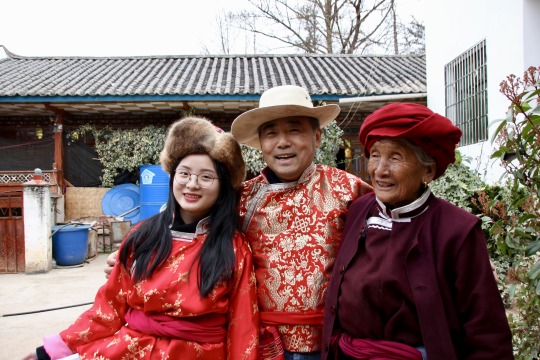

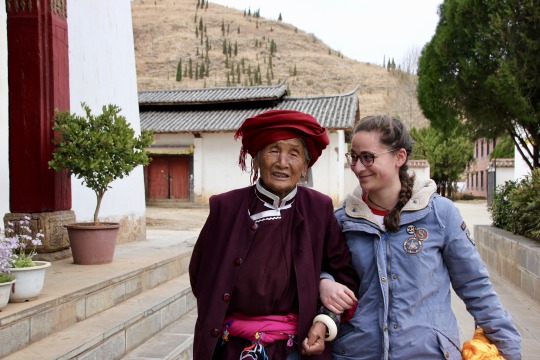
Jealous as I was hearing of Emma’s adventures, I continued to seek stories of the trip. I knew, from years ofGlobal Collegefield trips, that the programming frequently outshone the way it was described on our itinerary, like the way the performance in Taiwan was explained to us as mere children’s theater. Sophie confirmed my beliefs.
Sophie Gagnaire: So, on the trip we met this Naxi woman and she took us to a monastery where her brother works, where we met the living Buddha. I was really blown away by how decadent and extravagant it was. The monastery was in this compound that also had a four-hundred-year-old building, so we got to see these original wall paintings from four hundred years ago, and this massive, thirty- or forty-foot Buddha statue. It was amazing!
One of these things that most clearly marks aGlobal College field trip is the last-minute adjustments. It is not that Global is unprepared; quite the opposite, in fact. It is rather than a field trip of this nature, twenty foreign students attempting to experience something meaningful in the same place, year to year, lends itself to mishaps and unexpected schedule adjustments, and Global is admirable in the way in which it adapts to such itinerary shifts, and the way in which its students learn to adapt and participate.
Santiago Sanchez y Lucero: So, we drove seven hours into the mountains to make it to the Tibetan region [of Yunnan province], and about six hours in, we ran into police officers who told us that we had to turn back because we were arriving on the tenth anniversary of an uprising that was orchestrated by American student. We seemed like a suspicious group, which I guess is fair.
I caught up with Nicole after I spoke to Santi, asking if they ever did come into contact with Tibetan culture. We were all, at least in our late-night pre-trip debates, keen to engage with Tibetan culture, given that this may be our only chance. We are, after all, a crew of liberal arts students from the United States filled with radical ideas and a truly American inability to censor ourselves when it is appropriate.
Nicole Price: I forget which day in the trip this was, but it was a few days into our trip, and we visited a university where they have an entire portion dedicated to Tibetan language and culture. We got to see their archives of Tibetan language and culture, and also other minority languages that have almost died out, like the Yi language. It was really cool because we got to enjoy a perspective, through these archives, that not a lot of people would have access to. It was exciting to see in practice the things we had been learning about all semester.
Now, Global field trips are, first and foremost, about learning; after all, we wouldn’t be going into this much debt for a degree if we weren’t being provided an excellent education. Still, I spent most of my childhood at summer camp, and I have noticed some close similarities between a day at camp and a day on a Global field trip. Many similarities are superficial, such as the odd sleep schedule, unusual group activities, and the way you seem to fit more into one day that you would fit outside of camp/field trip in a week. What stands out the most, though, are the ability you develop to adapt, at lightning speed, to adversity, and the degree to which you bond at dinner time. At camp, social life revolves around the dining hall, and in the mountains with your Global classmates, you feel the most like a wonderful family when you’re swapping food and stories and recounting your day over more food that you could ever finish. Courtney-Lynn agreed wholeheartedly.
Courtney-Lynn Mellina: My favorite group dinner from the Yunnan trip was the Tibetan-style dinner we had with the living Buddha and the rest of the class. It was, by far, one of my favorite dinners in all of Global, and the food was spectacular! I made some new Tibetan friends, we had great conversation and I tried foods I had never tried before It was a real sense of community that I’m so glad I was a part of.
Now, in spite of certain commonalities, every trip is different. I love taking the things we learned in the classroom out into the field, and I know many of my classmates feel the same. It’s always exciting to find a new way of learning, exploring areas made accessible to you only by the luck of going on the trip; I hope my jealousy isn’t coming through in my writing, I’m not bitter, I’m fine, everything is fine. Sophia and I caught up over dumplings.
Sophia Cox-Wright: One of the highlights, definitely for me, going on this trip would be that, because of scheduling matters and some things, logistically, that just ended up not working out, which kind of just happens sometimes on Global trips, we got a bit more time to just hang out and be alone. It gives you a chance to just learn from the place that you’re in. For example, one of the things that I really enjoyed was going in to the town square in one of the villages and just sitting there and watching the tourist trade and Chinese tourists. It was interesting seeing the effects of it, if that makes sense, and seeing it for myself instead of just reading, trying to integrate myself into that space. That experience is definitely something I’m going to be thinking about for a while.
As I gathered these stories, both for the purposes of writing and personal gratification, I couldn’t help but compare them to the looks on my classmates’ faces when they returned and my own past experiences. This trip to Yunnan and Sichuan provinces was as intense an experience as promised, and like any field trip, the best and the worst part was coming home. After all that you learn, you just want to be somewhere comfortable to process it, even if that means leaving beautiful new places you have become attached to. By taking part in the post-trip emotional processes of my friends, I enjoyed the trip in my own way: vicariously. Until I have time to visit on my own, that will have to be enough.
by Julia McCoy.
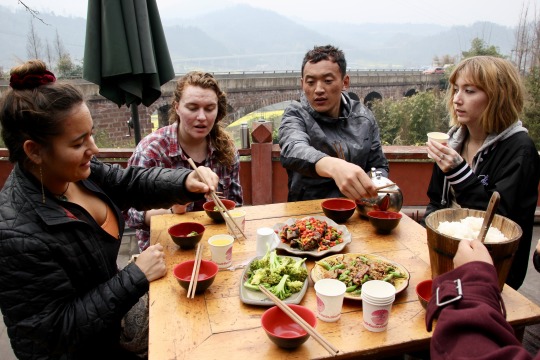
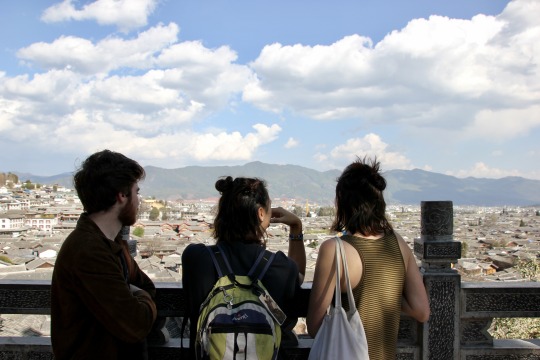

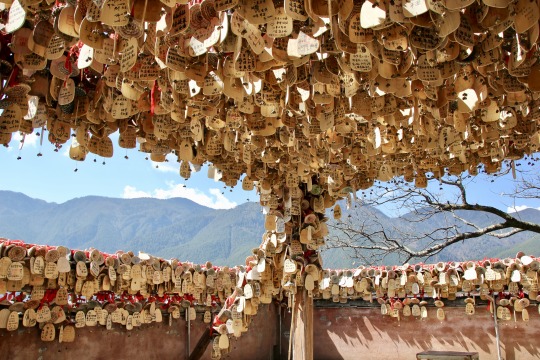
Amazing Taiwan
by Julia McCoy
I touched down in Taipei at 8PM, a little worse for wear from a nearly 14-hour flight. In my travels thus far, both for school and for fun, I had yet to visit Asia, and the first two hours did nothing to impress me. It was dark, it was rainy, and I was thoroughly car sick by the time I arrived at the hostel where we were to spend the next week-and-a-half. Maybe it’s just another city, I thought, as the front desk assistant explained the nuances of key cards, maybe it’ll just be another class location. It wasn’t until I arrived at my room on the fifteenth floor and opened my curtains that I understood: the view was spectacular. People can identify major cities worldwide from night photographs of their skyline, and though my view was from inside the city itself, it may well have been a postcard photo for the impression it made upon me. A lazy river, elegant suspension bridge, and a steady stream of tail and headlights on the right, an industrial district with only a smattering of lights like fireflies, and, in the far distance, a Ferris wheel. No two nighttime cityscapes are the same, and I fell asleep excited to see the city in the daylight.
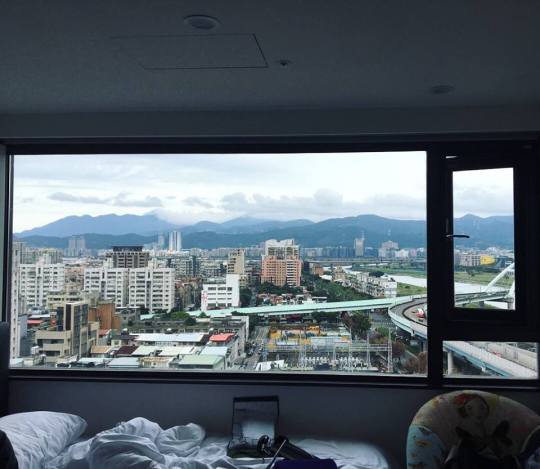
Three days later, with everyone settled in, Taipei begins to feel like an education, rather than vacation. New faces come together as students from two differentLIU Global Centers, plus a few stragglers, meet and begin to compare notes. Have you had this professor before? Where did you spend your Winter break? Do you speak enough Mandarin to order me a bubble tea? What’s the best subway system you’ve been on? That last question is popular; in my personal opinion, Taipei is currently tied with Berlin, since they are equally spotless. We are all thrilled for the two classes we will be beginning here: Ethnic Minorities in China, taught by Professor Liu Wei, and Topics in Chinese Society and Change, taught by Dale Albanese. Most of our daily events are focused on Dale’s class, though we receive lectures in both. I find myself waking early again, a change from my habit at home, simply because I am so thrilled to begin my day. I also rise early to catch the free breakfast, complete with fresh juice. That’s something many students miss when they return to the States from the Global Centers, how much fresher the food tastes.

Though the food in Taipei is no exception, it is often the least exciting part of our busy days. Each day we are introduced to truly amazing people and visit impressive sites. One day we have lunch in the Legislative Yuan with KMT Legislator Jason Hsu, a charming man who tells us of his fight for marriage equality in Taiwan. The next afternoon, we are having a lively discussion on activism and politics with Brian Hioe, the editor of Taiwan’s independently published English-language magazine New Bloom. At night we are visiting the theater to view the subversive, emotional animated film On Happiness Road; later, I enjoy hot pot for the first time with my class as we compare how many times the movie made us cry. Left to our own devices, we wander through the exhilaratingly busy night market and eat every iteration of street food we can find. To my knowledge, no one had the courage to try the stinky tofu, though Dale promised us it tastes better than it smells. We rode the subway all the way out to the zoo and eschewed the animal attractions for the scenic gondola, riding it to the top of a lush mountain and rewarding ourselves with afternoon tea. Some nights, we stayed in and read, passing out at 9PM from sheer exhaustion. Every day was an adventure, but one, in particular, stands out.
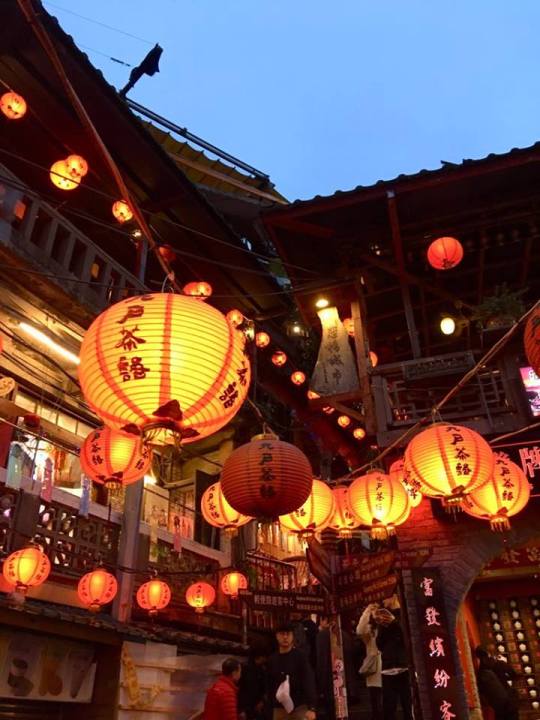
In preparation for writing this, I consulted with many of my classmates. I wanted to know their fondest memories, and their takeaways, and even their frustrations. I found that all anyone wanted to talk about was Yilan; if I’m being honest, it’s all I wanted to talk about either. So much happened that day, it took three of us to piece it together. Yilan is a county in Northeastern Taiwan. That morning, Dale woke us up at a rather unpleasant hour, herded us onto a bus, and acted as our hype man all the way to the Lanyang Museum. There, we were free to wander as we learned about the flora, fauna, tribes, history, and industry of the area. From the interactive displays to the lovely pier where we discussed our impressions and ate cherry tomatoes from a nearby stand, the hours flew by. Before we knew it, we were whisked away to a beautiful temple filled with rather intimidating carvings. Dale entreated us to dry a favorite local treat of his, a small crepe filled with vanilla ice cream, shaved peanut brittle, and cilantro for the brave. We meandered over a hill and down to the beach as we waited for dinner. I have found in my years here that, for many Global students, learning is most effective when punctuated by breaks in nature; as we tugged off our shoes and ran onto the beach, I thought I heard a collective sigh. I certainly heard one when it was time to leave, but dinner turned out to be well worth it. Now, when I think of a seafood restaurant in the U.S., I imagine that they have sides and alternatives to go with the main fare. This endless family-style meal had absolutely nothing but seafood, seafood, seafood. At this point, I was regretting my personal pledge at the start of the trip to try everything, but I am not a quitter. That night, I ate at least one bite of every dish on the table: fish intestines, whole squid, cuttlefish sausage, and so much more. As we all loosened our belts, I think we assumed there was no way to top the day we had just had.

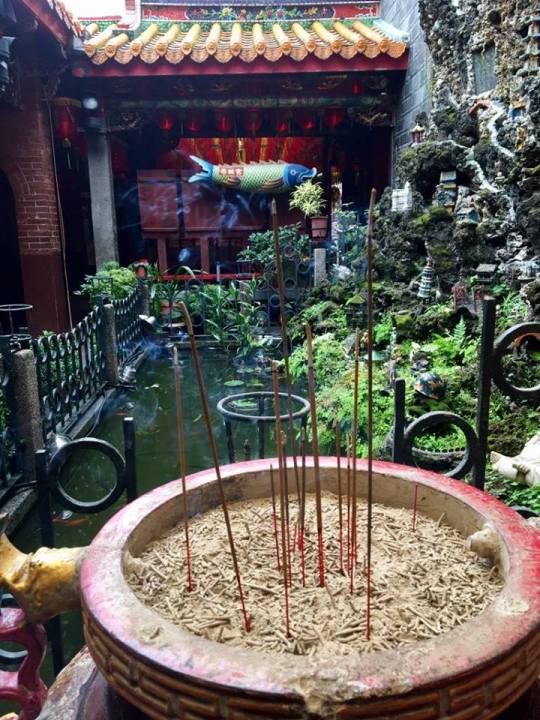
Every single person I asked said, unequivocally, that the after-dinner entertainment was the best part of the entire Taipei segment. It was the epitome of the Global experience, in that we learned more from this incredible experience, and generated more critical thought, than a three-hour lecture in a traditional classroom setting could ever replicate. That night, we attended a performance of the Paper Windmill Theatre. Founded in 1992, their many troupes travel the length of Taiwan, and sometimes further, bringing free theater to the children of small towns. They are funded by corporate donors and sponsorships and strive to bring artistic engagement to kids and their families who would otherwise not access is. The performance was engaging, innovative, and downright thrilling. Children from babies to preteens filled the audience with their parents; the director informed us later that 500 children were present that night, over half of the youth population in the entire town. They had acrobats, clowns, and a multilingual witch. There were funny skits, moral skits, and an entire five minutes of the audience throwing giant pool toy animals around. Though none of it was in English, I had only to look over my shoulder to see my classmates faces and know that they were enthralled. The grand finale involved the innovative use of pool noodles and a blacklight; incredibly low budget, but it will stick with me for the rest my life.
The reflection conversation the class had that night was Global College in its purest form. We spoke with passion, we asked a thousand questions, and each of us left with a burning desire to keep learning. It was all of these experiences that made our Taiwan trip distinct, an exhausting but perfect start to a semester in China. As the plane took off to ferry us to Hong Kong, I knew that, although we were all sad to go, those two weeks were only the beginning to our next Global adventure.
Post link
Studying in the city of Renassaince.
by Nora Gibbons.
After semesters in Costa Rica and Spain, theLIU Globalclass of 2020 all have
experience in the art of essay writing and crafting a written argument. But how many of us have had the chance to express our ideas in a visual or fine art form, through video or printmaking or drawing or photography? These are the opportunities we have had over the last couple of months at the Florence School of Fine Arts. Now, not only do we have the skills to write a research paper on our favorite global issue, we also have experience creating documentary videos about climate change or using augmented reality technology to comment on the visibility of women in a variety of realms.
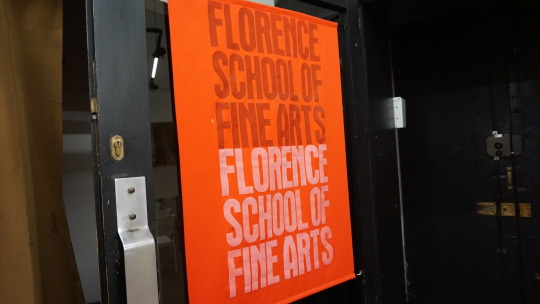
Located in the Santa Croce neighborhood in central Florence, the Florence School of Fine Arts, according to cofounder Melania Lanzini, “is an innovative arts program bringing forth new ideas and different approaches to teaching.” The school itself is actually located in the former home of Giorgio Vasari, a notable writer, architect, and artist in the Renaissance. And this is not the only brush with history that we get to experience throughout our days in Florence.

Some of us wake up to a view of frescos on our bedroom ceilings in our apartments or walk past Brunelleschi’s famous Duomo on our way to school. We spend each Friday morning some of the most renowned museums and historical sites in Florence, learning about Renaissance art from our professor Frederica, a talented art historian.
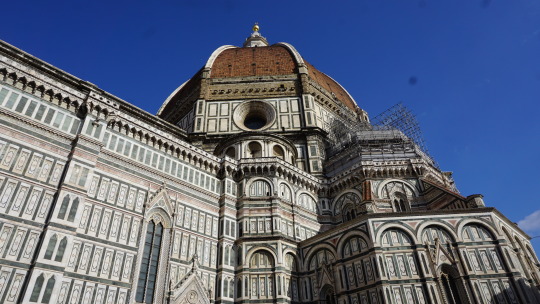
In addition to the Renaissance art class, the Florence School offers us courses in Italian language, interactive design, filmmaking, and world cinema. For those of us Global students able to take an overloaded schedule there are also opportunities for drawing, photography, printmaking, letterpress, and bookbinding classes.
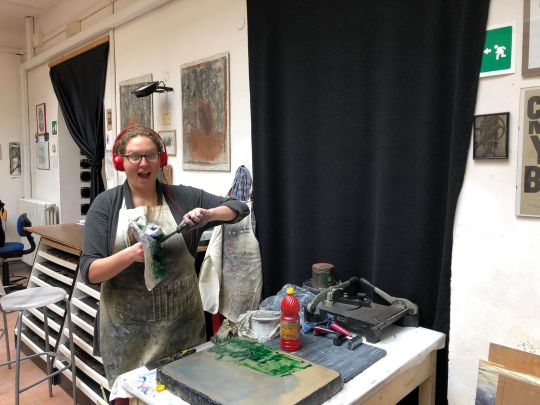
For many of us, our only wish is that we could have taken advantage of more of the courses offered at the Florence School.
Since we are each taking different electives based on our interests, each of our days looks different. Some of us may head to the studio early to work on interactive design projects, using technology on smartphones to turn photos, drawings, and paintings into an interactive sight and sound experience or to work on hand binding books of our artworks. Others may have a slower
morning in our apartments drinking a cappuccino and preparing for a world cinema presentation later in the day.

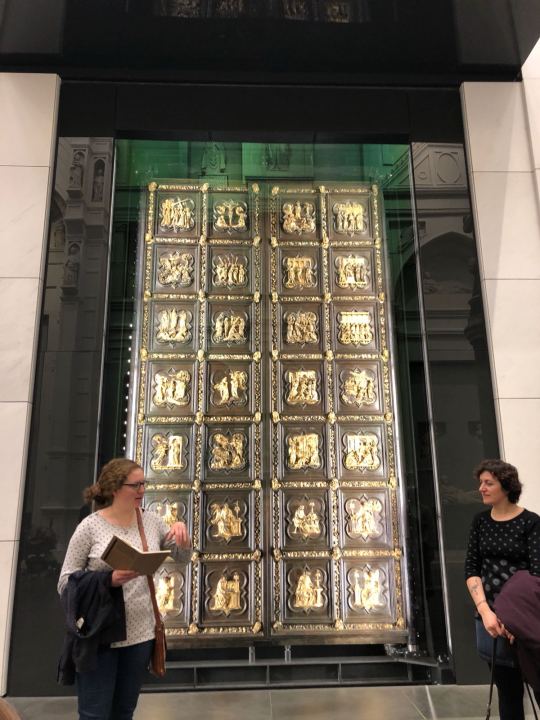
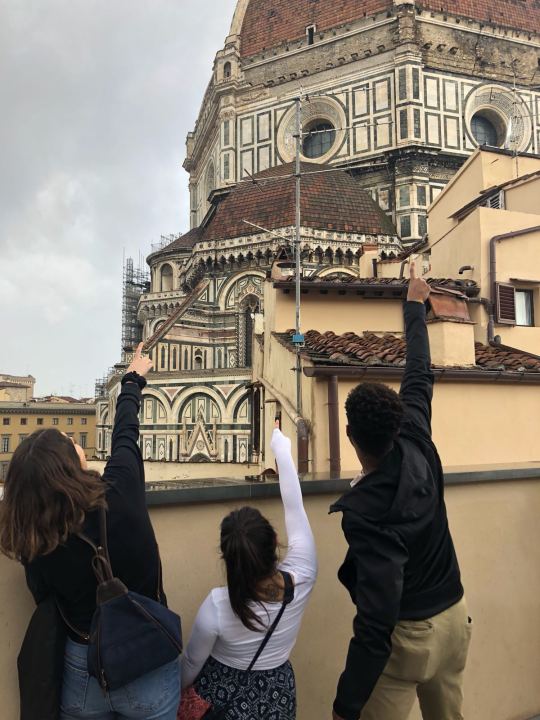
The main constant throughout our diverse days though is the opportunity to express ourselves creatively, surrounded by a city filled with inspiration.
For many of us though, the best part of this experience is the people.
We have been so grateful for the support of theFlorence Schoolfounders, Charles Loverme and Melania Lanzini, and all the staff of the Florence School. From advice and guidance on our creative projects to fixing a
leaking washing machine late at night, we can always count on them to support us and advocate for us and cannot thank them enough.
Post link
London and Berlin
by Gwen Lindberg
The sixteen sophomores in the 2017 Fall Europe 1 Program began their academic year by spending seven days in London and ten days in Berlin. In a class studying European Politics, taught by Rainer Braun, we spent our mornings in three-hour self-directed lectures based on readings assigned the night before. Our afternoons were spent on experiential education excursions (okay, field trips), where we explored historic and famous locations, museums, and monuments across the two cities. Our evenings were spent wandering the cities on our own, finding little jewels and eating an enormous amount of delicious food. (If you happen to find yourself in London with a free afternoon, try to find one of the culture containers spread across the city; I particularly recommend the one called Artworks Elephant at the tube station Elephant and Castle. They are little shipping crate container areas that have been taken over and transformed into little ethnic restaurants. If you’re looking for places to eat in Berlin, take the train to Rosenthaler Platz; you will find a huge selection of restaurants with food that ranges from schnitzel and spaetzle to kimchi and kebabs, with special 24-hour homemade pasta places.)
If you haven’t already guessed, this year’s sophomore class is entire, completely, irrevocably food-motivated. Ask us if we are interested in going somewhere, and you’ll probably get a mixed response. Tell us there will be a snack…and every single person will show up. We eat good while talking about other food, while thinking about more food. What a wonderful way to live.
Our lectures in London primarily focused on the concept of the state and the creation of modern nation-states. We studied the interaction between nationalism and the state and its effect on governance. We visited Buckingham Palace, and as exciting as seeing a secret passage behind a mirror was, we were all rather disappointed we didn’t get a glimpse of either the Queen or her corgis. We toured the house of the EU Parliament and learned of some of the rules that give British politics a rather stuffy reputation. Our day at the UK House for the Representatives to the EU was spent understanding the ramifications of Brexit and the public’s dissatisfaction with the way in which information was provided before the vote. Thursday included a visit to the Black Cultural Archives, where we had the opportunity to study authentic newspaper clippings from the civil rights movements across the UK. Though our original plans to tour a mosque on that Friday fell through, we did have the chance to view an exhibition of Islamic Feminism, with small yet incredibly powerful displays designed to elicit personal responses from each viewer.
Berlin was spent focusing on the interactions between nation-states and how the formations of such relations continue to echo post-war sentiments to this day. Our visit to the Topography of Terror on our first day in Berlin set the stage for us to focus on historical contexts mirrored in today’s political climate. We visited Checkpoint Charlie, and we were captivated by a collection of personal photographs from the fall of the Berlin Wall on November 9, 1989, and an interactive, panoramic display of the wall just before its fall. The exhibit made history a tangible thing, something we could see and hear and almost touch. We also visited the German National Museum, the Memorial to the Murdered Jews of Europe, the Memorial to Persecuted Homosexuals Under Nazism, and the Memorial to the Sinti and Roma Victims of National Socialism. Each memorial elicited a different response; the abstract blocks of the first brought unexpected emotions to the front for many of us, while others were more affected by the interactive aspect of the Homosexual Memorial or the calm pool and engraved stones of the Sinti and Roma Memorial.
Our visit to the Sachsenhausen Concentration Camp was powerful and thought-provoking for all of us, regardless of whether or not this was our first visit to a camp. The usage of concentration camps in the post-WWII era was a new concept for many of us, and it was equally fascinating to see the monument set up in the middle of the camp honoring only the communist prisoners in the Soviet era.
Our class agreed in unison that the most interesting afternoon excursion was the walking tour we had early on, led by a Syrian refugee, who tied post-WWI and -WWII events to the current violence in Syria. The connections made during this tour were something that never would have occurred to me on my own, and it has inspired me to look more deeply into the interconnectedness of history.
The first two weeks of the semester flew by as we reconnected with classmates and rekindled our spirit of passion and adventure for the upcoming semester in Spain.
Post link
What do you picture when you think of China?
For many people around the world, the first images that come to mind are often of hyper-developed urban landscapes—skylines built from glass and steel, streets clogged with people, and a gauzy veil of smog draped across it all. And while this may be a fair description of some large Chinese cities on particularly polluted days, there’s another face of this country that remains largely invisible.
For our first class trip of the semester, students from the LIU Global China Center left behind the city of Hangzhou to spend a weekend in the countryside of Anji County. It was an opportunity to learn about the culture and sustainability of China’s rural areas. While traveling by bus out of the city and into the mountains, I was struck by the beauty of the landscape. We were surrounded by dense, green forests that stretched out across the rolling hills and mountains, and the mist formed naturally in the rainy climate (in contrast to the smoggy skies over Hangzhou).
It was a busy couple of days—we visited several local communities with our guide, and she introduced us to a different side of China. It was clear that the people we met in Anji were excited we had come to learn about their home and eager to share their culture and environmental work with us. I felt this way especially when we went a bit further out into the countryside to see some of the environmental initiatives being implemented in small towns (such as water treatment and waste disposal systems). We were also fortunate enough to be invited to the homes of local families. I and a group of other students had the chance to speak with Mr. Chang, a retired local politician. He talked to us about his role in the government and community and the significant changes he’s seen in the area over the course o
This theme of gradual changes in rural areas was a recurring theme throughout the weekend. The people we met in Anji value their traditions and culture, and appreciate the peaceful beauty of their natural environment. However, they are also aware of the uncertain future of rural communities. Village populations continue to shrink as younger generations move to cities in search of better jobs and education. As we visited a number of “green” buildings, environmental projects, and other local organizations, we gained a deeper understanding of China’s “beautiful countryside” initiative. With a combined focus on “planet, people, and profit”, this governmental project has played a major role in Anji’s efforts to protect its natural environment and way of life. One student, Alejandra Molina, found the government involvement in these local projects impressive, explaining that “it was a very enriching experience, seeing the efforts that the government has made to preserve the countryside even in this age of urbanization.” They’ve certainly made quite a lot of progress, but as the people, we spoke with emphasized, there are still no guarantees as to the sustainability of this movement. Erin Young was also interested in learning about the complex issues at play here. “Our discussion with our guide really opened my eyes to the local problems occurring in the Chinese countryside,” she said. “I think seeing it firsthand, the tourism they are attempting to create proves how difficult it is going to be for them.”
Environmental sustainability—as well as its intersections with cultural traditions and ecotourism—is a subject that my classmates and I have had the chance to study in depth in a variety of locations over the last few years. It’s always interesting to see how these processes and conditions differ between countries. One student, Karla Dana, appreciated the opportunity to explore the connections between Anji’s problems and the larger global issues we’ve been studying in our classes. “What impacted me the most about this trip was the interplay of global and local dynamics,” she said. “I learned how the recession in the mid-2000s affected bamboo farmers in Anji, which in turn led them to plant tea instead of bamboo, and that ended up having negative repercussions on the land in local villages. It’s always interesting to gain a local perspective on global issues!”
Overall, our trip to Anji was an engaging experience. I’ve always had an interest in environmental issues—and our readings and lectures had provided important background knowledge of China’s environmental protection initiatives—but this weekend helped to fill in my understanding with so much more nuance and complexity. Trips like these always leave me feeling so grateful to be a Global student and to have the opportunity to witness the local applications of more abstract global issues.
Anji,
by Emma Manos
Post link


